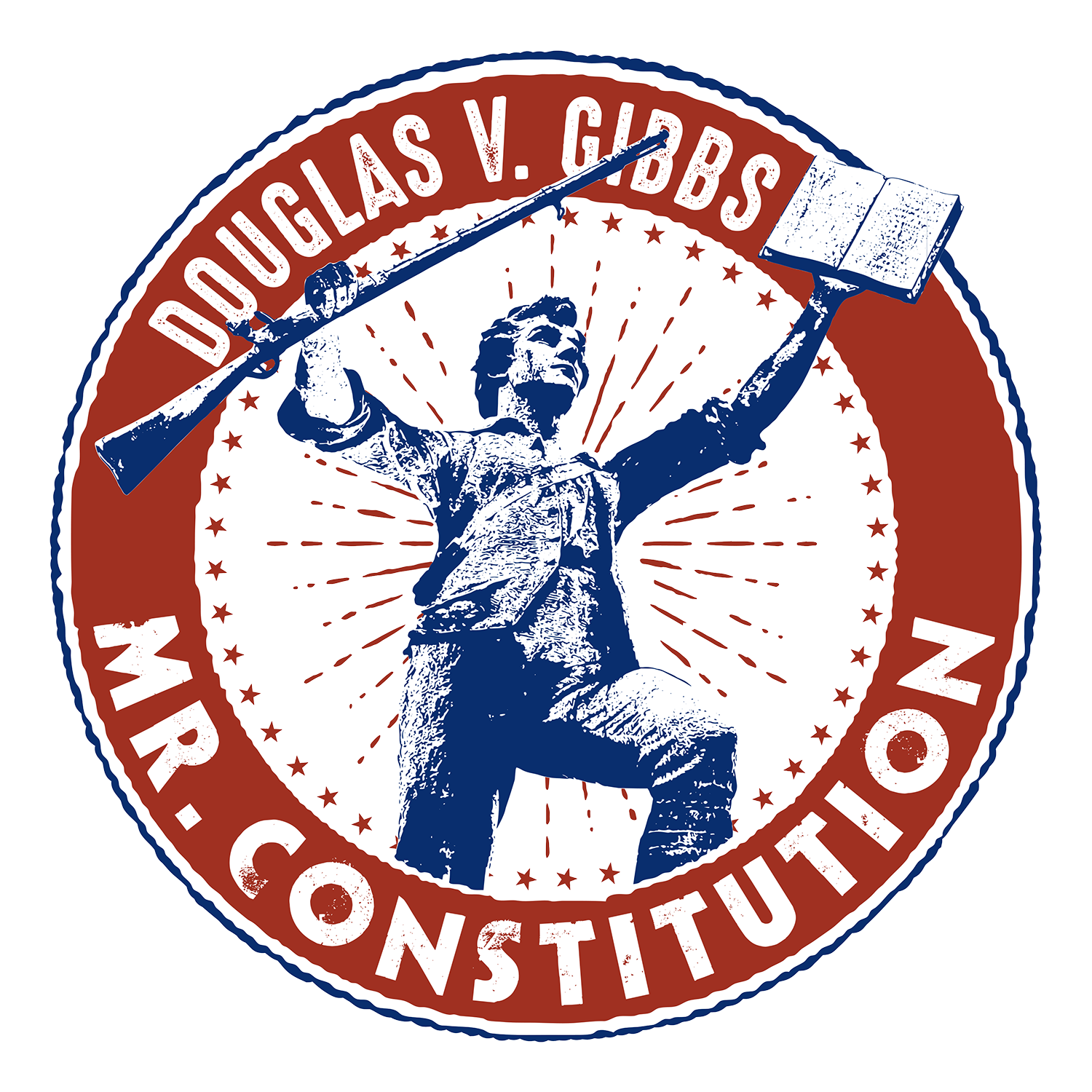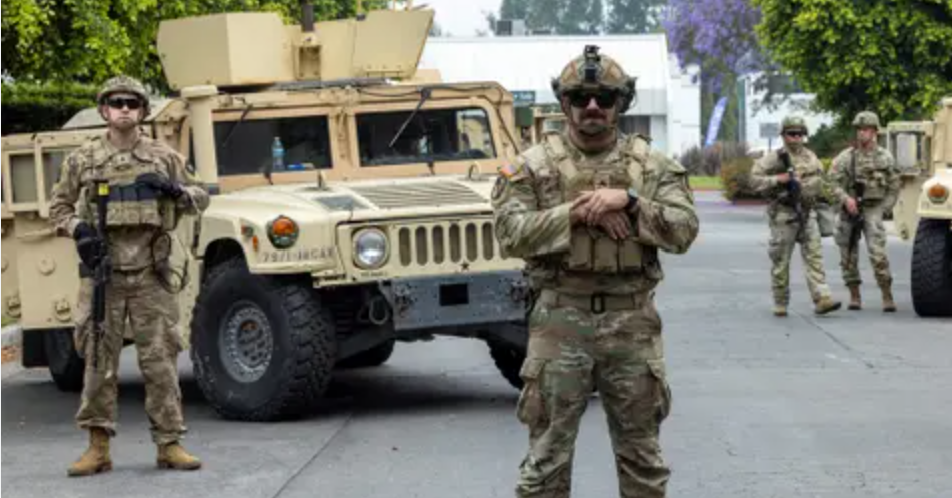By Douglas V. Gibbs
As a constitutionalist, if the federal government, and in particular the President of the United States, is overstepping authorities and violating the founding principle of limited powers I will be the first to say so. The federal government established by the United States Constitution was established to be limited in its powers, and authorities that should remain with the States remained intact at the local level through that document. If it had been otherwise, the States would have never ratified the founding document.
States’ Rights, sovereignty on state issues and an autonomy of the States on certain issues is a paramount foundational part of what the Constitution is all about, and such thinking is codified by the Tenth Amendment which indicates that if a power is not granted to the federal government by the Constitution, nor prohibited to the States, the power belongs to the States.
The Articles of Confederation had a great influence on the Constitution and the desire by the Founding Fathers to keep State identity and localism in place, but the Founding Fathers also realized that the Articles of Confederation were too weak in other arenas. For fear of a central government becoming too powerful, they made it not powerful enough. The Constitution, therefore, was all about seeking balance through a proper distribution of powers – strengthening the authorities of the central government on particular issues while keeping it limited on issues that needed to remain with the States.
In short, while the federal government was granted only limited powers, the authorities it was granted were to be carried out in a strong way. The Founding Fathers realized that for a central government they needed a lion, but the system was more like a lamb under the Articles of Confederation. But, a ferocious lion is capable of being a vicious animal against its handlers if allowed to run rampant domestically, so it was put in the cage of the Constitution to keep it under control when it came to We the People. That does not mean that the ferocious potential of the federal government was eliminated. The creature we call the federal government was allowed to keep its teeth and claws on purpose so that when it needed to be unleashed on certain issues it had the strength and capabilities to do so.
The Constitution is designed around a concept of “granted” powers. The original list of granted authorities are listed in Article I, Section 8. Other powers appear in other parts of the Constitution. According to Federalist Paper #45 by James Madison, those powers revolve mostly around external issues and disputes between the States. Sometimes, those issues also reach inward, which is when the federal government is authorized to operate domestically, as well.
According to Article II of the Constitution the President of the United States is the Commander in Chief, which gives him authority to take actions regarding National Security; and that he is vested with the Executive Power, and that those powers include the authority to “faithfully execute the laws of the United States.” Article I, Section 8 of the Constitution is clear that among the tools available to the President to execute the laws of the United States and to combat invasion and insurrection he has the ability to deploy the militia as long as those personnel have already been called into the service of the United States by Congress.
The Founding Fathers in Article IV, Section 4, however, provides a caveat to the President’s powers over the militia (of which the National Guard is a part of the organized militia according to the Militia Act of 1903) which states that if the use of the militia is for the purpose of simply quelling “domestic violence,” the militia may not be deployed federally unless it has been requested by the state legislature, or the governor if the legislature is unable to convene. This is why President Trump during his first term in office did not deploy the National Guard or any military personnel while the riots in Portland and Seattle were raging, except to protect federal properties that might be in danger. This is also the argument that Governor Gavin Newsom is using in his challenges against President Trump. Judge Charles Breyer, a federal district court judge, ruled that according to Title 10 U.S.C. § 12406 the federalization of the National Guard must be issued “through” the governor of the State. “Through,” first of all does not mean “get the approval of.” It means “advise,” as per historical precedent, and federal law. While the Constitution does not require the President to advise the governor of the use of the militia to execute the Laws of the Union, President Trump did advise Governor Newsom of his intent to use the National Guard through telephonic contact. Newsom later lied, denying that the conversation had occurred even though President Trump has provided proof of the telephone interaction.
In Los Angeles as the ICE Riots rampage through the city President Trump has deployed National Guard personnel in order to protect federal buildings – a common sense move that is not only necessary, but is allowed constitutionally and legally. The Constitution, existing law, and multiple cases of precedent affirms that the President of the United States may deploy personnel to protect federal properties regardless of the opinion of the state legislature, or the governor of the State.
The presence of personnel under the command of the President of the United States in Los Angeles is also there to execute the Laws of the Union, authorized by Article I, Section 8. The authority to establish immigration law by the Constitution to the federal government is something nobody has ever questioned. In fact, when Arizona established an immigration law to empower their state law enforcement personnel to carry out laws that mirrored federal immigration law, the Obama administration sued Arizona claiming that immigration is solely a federal authority and that the Arizona law violated the Constitution by enabling the State to carry out deportations contrary to the policy of the federal government which was at the time refusing to execute immigration law on the books. In other words, the Democratic Party (like usual) is acting schizophrenically. Obama claimed that immigration law was the sole authority of the federal government and the President could do whatever he wanted regarding immigration, including refusing to execute immigration law. But now, the argument being used is the exact opposite – immigration law may only be executed in a limited manner, and the judges and states may interfere with federal enforcement and micromanage the President’s actions without question. Which is true, Democrats?
The job of the President of the United States is to execute the laws of the United States, and to keep the country protected from invasion. ICE raids that are being protested against is a case of the President executing the laws, and Article I, Section 8 recognizes the use of the militia for that purpose, and unlike Article IV, Section 4, the federal government does not require state legislature approval, or the blessing of the governor to carry out those duties. The President’s ability to carry out his duties as they pertain to his executive power to execute the Law of the United States is also not to be micromanaged by any judges, or the States.
While state sovereignty, states’ rights, and localism is indeed important, those ideas pertain to state authorities, not federal powers. The President of the United States, if he is to be able to be effective in his duties, must be able to carry out those duties granted to him without interference as per the concept of a separation of powers. While there are provisions giving the President the authority to operate in whatever manner he needs to in order to execute the Laws of the United States, there are no provisions allowing interference by the States when it comes to federally authorized issues, and in fact in Article VI the Constitution tells States that they have no authority to make law contrary to federal law that is pursuant of the Constitution. Such laws or actions by States regarding constitutionally authorized federal operations is unconstitutional. Which means Newsom’s response and the lower federal court’s rulings are unconstitutional.
Article III is also clear when it comes to authorities to the courts. The federal judiciary is tasked by the Constitution to apply the law to the cases they hear. However, there is not a single constitutional provision that allows the courts to use their position to micromanage the other branches of government, or to strike down any law or executive action. While the federal courts may issue judicial opinions regarding law or executive actions (dockets to this day still include the words, “It is the opinion of the court”) the judges possess no enforcement power, nor may they interfere with legislative powers or executive powers which are vested (which means exclusionary and irrevocable) in those branches, not the judiciary. If the President is operating in a manner that is unconstitutional, the courts may issue an opinion stating so, but it is up to Congress to take action by stripping funding or initiating impeachment, or for the voters to take notice and change their vote in future elections to change leadership.
The Office of the President of the United States was established by the Constitution to be energetic and strong when needed regarding constitutionally authorized federal operations, and he is not supposed to be hindered by unconstitutional rulings by activist judges who have forgotten that justice is blind – meaning that their ideology is not supposed to play any part in their decisions as members of the judiciary. Only the Constitution and the law matters (hence the blindfold over the eyes of Lady Justice which symbolizes impartiality and that justice should be applied without bias or prejudice, regardless of status, wealth, or identity) – and those judicial rulings against President Donald Trump are unconstitutional (which means “illegal”).
Precedent by previous Presidents (Thomas Jefferson and Andrew Jackson to name a couple), and the fact that the judicial branch possesses no authorized enforcement arm, means that not only are the courts that are ruling against President Trump’s executive orders and executive actions are unconstitutional but that President Trump, if he so desires, has every authority to defy the courts and carry out his constitutionally authorized duties despite their illegal rulings.
Added Note: Such defiance against judicial rulings by the President of the United States is viewed by the Democrats and their leftist allies (unless it’s their guy in office) as being against the rule of law. The rule of law is not judicial opinions or rulings. The rule of law is the Laws of Nature and of Nature’s God, the law as established in pursuance of the Constitution, and the Constitution itself. Judicial rulings and opinions are not “law,” and the courts have no legislative authorities, so calling judicial opinions or rulings the “rule of law” is inaccurate, and disingenuous. But, we must remember that the attitude of the Democrats is not about law, or truth – it is all about their power, their ideology, and their hatred for Donald J. Trump.
— Political Pistachio Conservative News and Commentary



